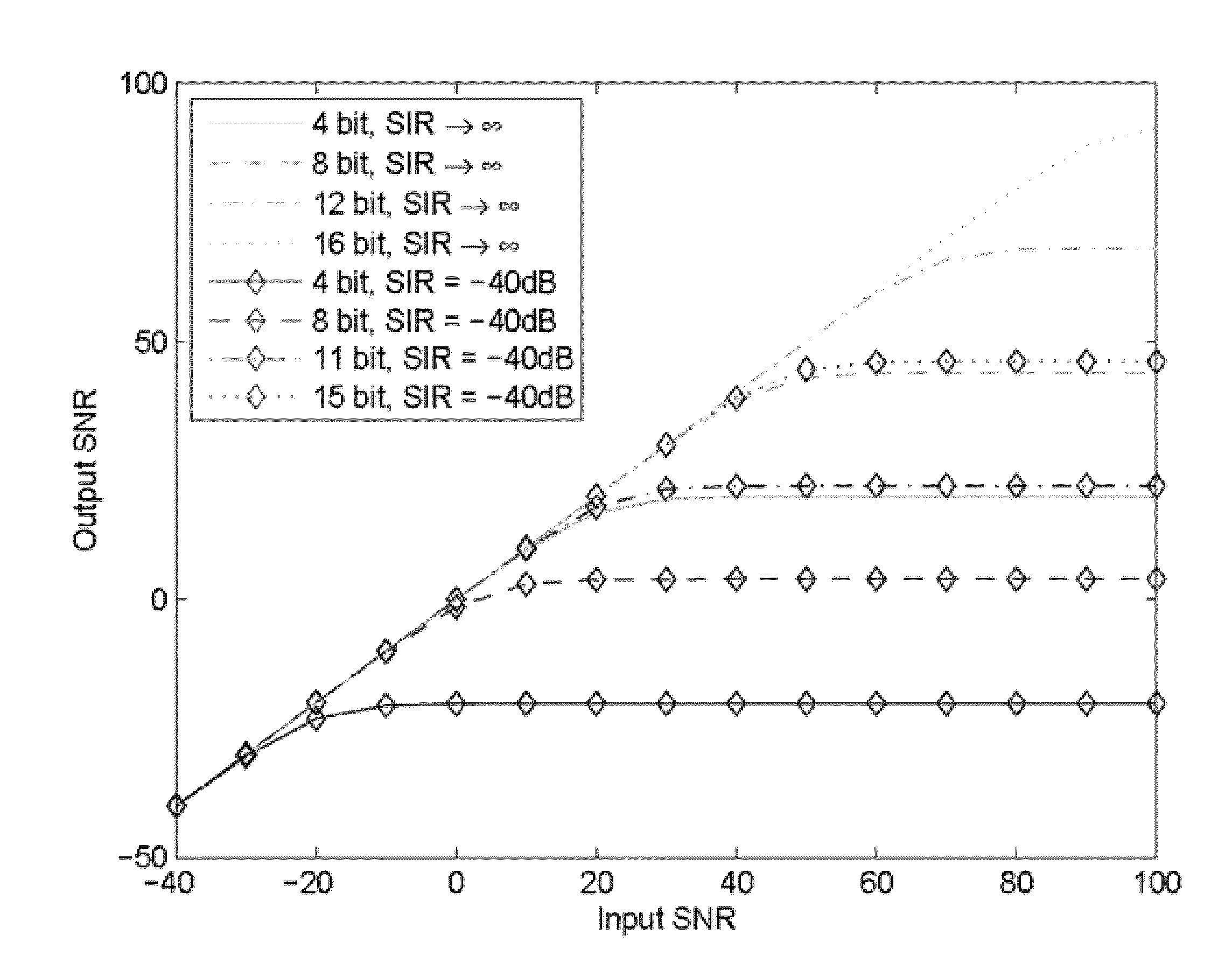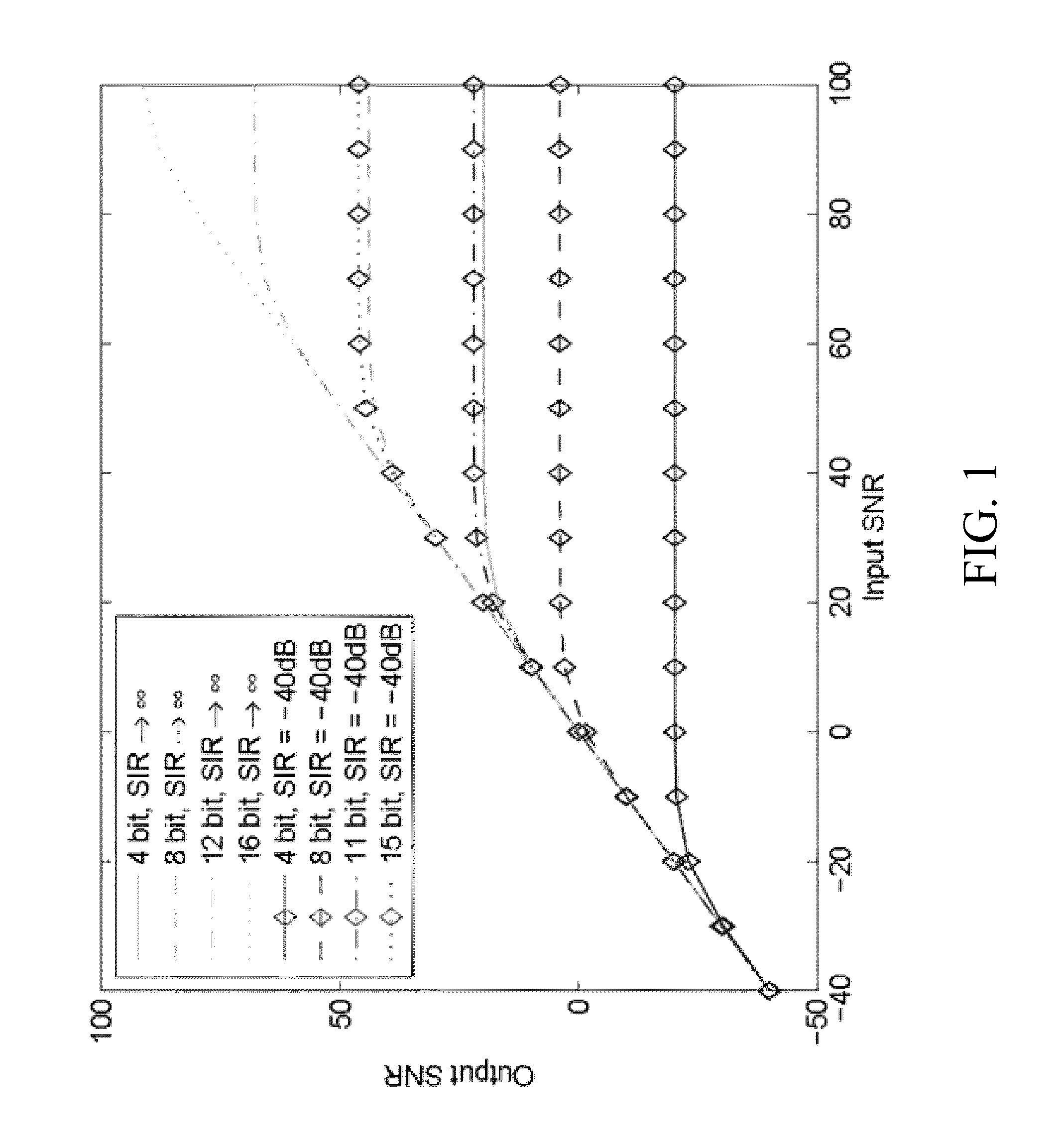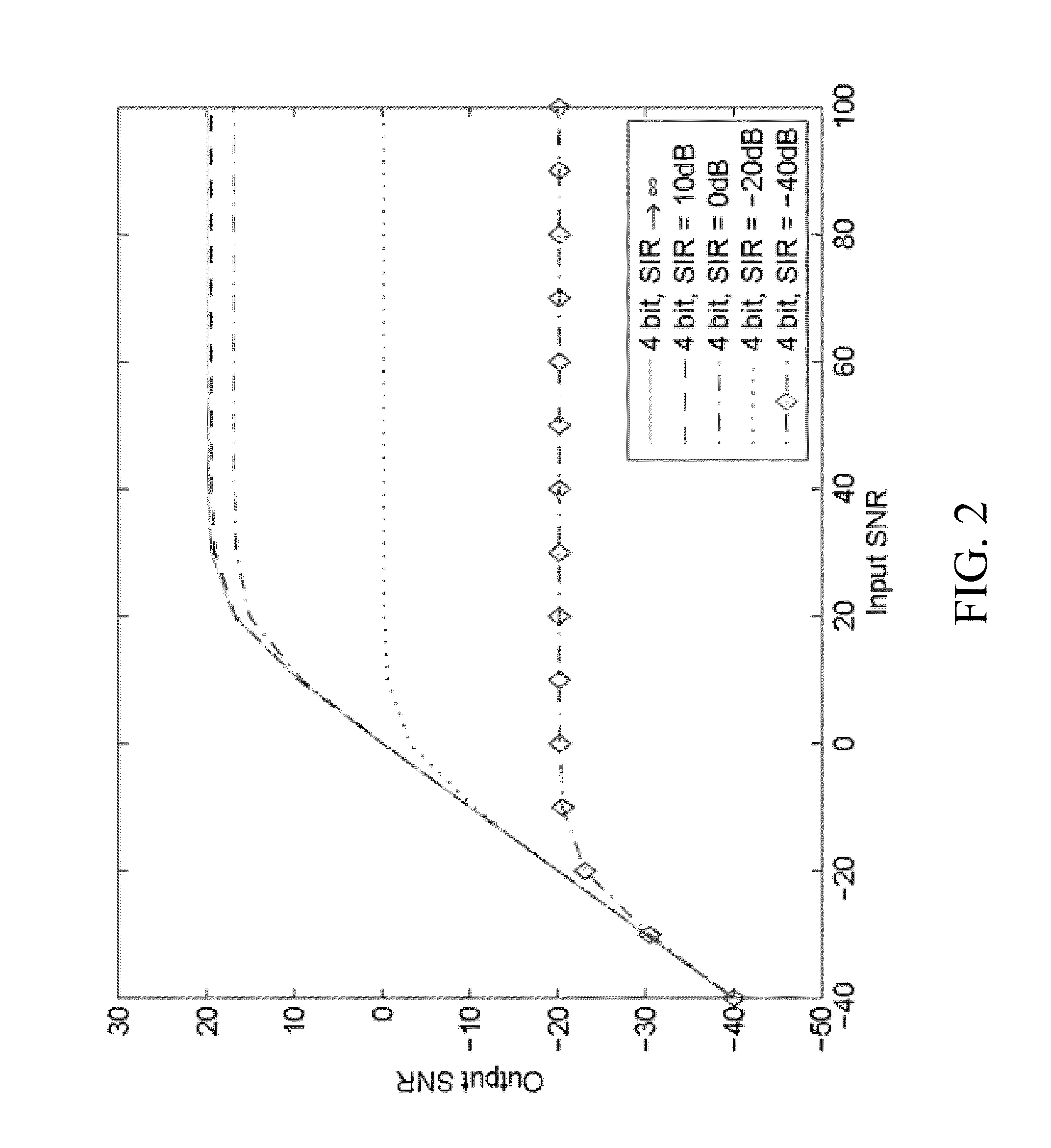Interference Cancellation for Full-Duplex Communications
a full-duplex communication and interference cancellation technology, applied in the direction of duplex signal operation, multi-channel communication, transmission path sub-channel allocation, etc., can solve the problem that the resolution of the current analog to digital converter (adc) cannot pass a received signal, the dynamic range and quantization resolution are the main obstacles in restricting the isolation level of the self, and the self-interference of at least 20 dbm
- Summary
- Abstract
- Description
- Claims
- Application Information
AI Technical Summary
Benefits of technology
Problems solved by technology
Method used
Image
Examples
Embodiment Construction
” is organized as follows. In Section 1, we discuss the limits of digital noise cancellation due to the performance limitation of ADC. In Section 2, we discuss the problem of self-interference cancellation and the approach we take to solve this problem. In Section 3, we explain the channel estimation problem for the purpose of digital noise cancellation. We describe the relation between the channel estimation and sparse signal recovery problems in Section 4. We provide specific algorithms for channel estimation based on the compressed sensing algorithm in Section 5. We discuss the generation of the self-cancellation signals under different scenarios in Section 6. We provide further simulation results in Section 7. Finally, conclusion is described in Section 8.
BRIEF SUMMARY OF THE INVENTION
[0018]An objective of the present invention is to cancel self-interference received by a wireless node from the transmitted signal from the same node.
[0019]An aspect of the present invention includ...
PUM
 Login to View More
Login to View More Abstract
Description
Claims
Application Information
 Login to View More
Login to View More - R&D
- Intellectual Property
- Life Sciences
- Materials
- Tech Scout
- Unparalleled Data Quality
- Higher Quality Content
- 60% Fewer Hallucinations
Browse by: Latest US Patents, China's latest patents, Technical Efficacy Thesaurus, Application Domain, Technology Topic, Popular Technical Reports.
© 2025 PatSnap. All rights reserved.Legal|Privacy policy|Modern Slavery Act Transparency Statement|Sitemap|About US| Contact US: help@patsnap.com



